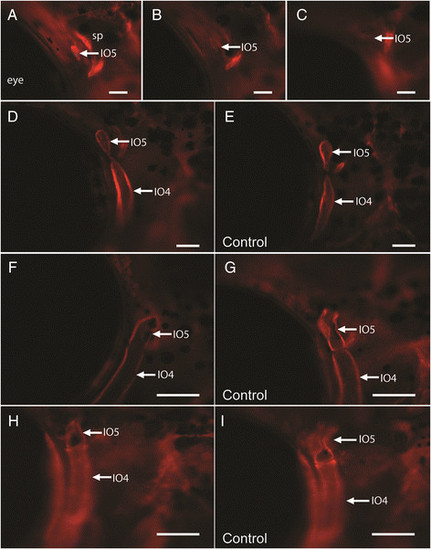Fig. 2
- ID
- ZDB-FIG-150602-17
- Publication
- Chang et al., 2014 - Perturbing the developing skull: using laser ablation to investigate the robustness of the infraorbital bones in zebrafish ( Danio rerio )
- Other Figures
- All Figure Page
- Back to All Figure Page
|
Laser ablation of the IO5 condensation in a transgenic juvenile osterix:mcherry zebrafish. (A) Before ablation IO5 condensation occurs anterior to the sphenotic (sp); (B) immediately after ablation the IO5 condensation is not present and does not fluoresce; (C) 24 hours post-ablation the IO5 condensation is still not present. The arrow in A-C indicates the posterior edge of IO5 condensation, the dark space anterior to the element is the eye. The other two bright regions are the anterior and anterodorsal edges of the spenotic (sp) which begins to ossify shortly before IO5. (D) by 4 days post-ablation a IO5 condensation has reformed (arrow) and touches the IO4 condensation unlike the control-side (E) in which the IO4 and IO5 are separate condensations; (F) the IO5 continues to grow at 2 weeks post-ablation and is still closely associated with IO4; it appears less developed (lacking canal walls) compared to the control side shown in (G). Two months following IO5 condensation ablation, the IO5 element is morphologically different to the control-side, compare (H) the ablation side to (I), the control side. The ablated side (H) lacks the anterodorsal flat-wing extension and canal walls are not approaching each other compared to control-side (I) Lateral view, anterior is to the left, Scale bars are (A-C) 50 µm and (D-I) 25 µm. |

